- There are six different options for replacing a missing tooth: dental implants, dental bridges, partial dentures, complete dentures, implant-retained dentures, and flipper teeth.
- Dental implants are the best option for a missing tooth due to their longevity, natural appearance, and comfort. They are not suitable for people with low jawbone density and can be rather costly if many teeth are missing.
- Flipper teeth are the most affordable option for replacing a missing tooth. They are the least durable and are more common as a short-term solution.
Missing a tooth? Search for emergency dental care with Authority Dental.
What are the pros and cons of each tooth replacement option? Here is everything you need to know.
Options for missing teeth
There are six different tooth replacement solutions you have for a missing tooth. Not everyone is a good candidate for every option, and your dentist will advise you on which treatment options might be best suited for you.
Dental implants
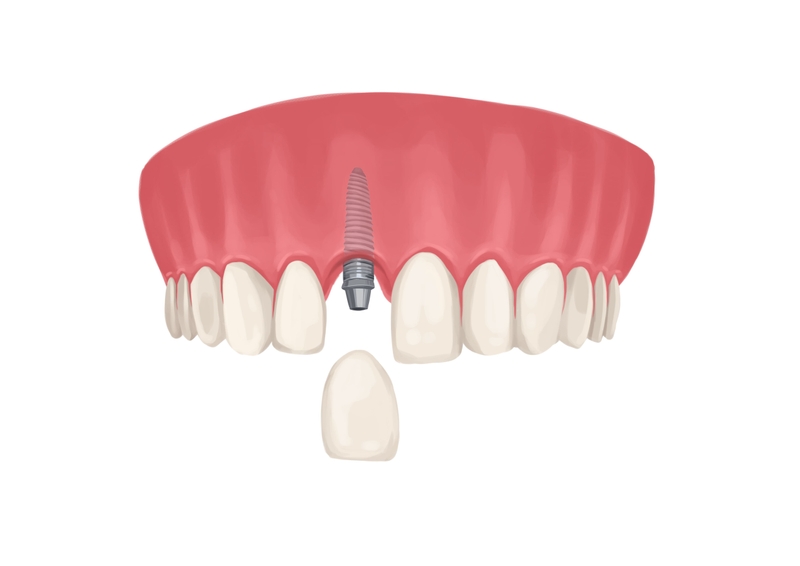
Picture by Authority Dental under CC 2.0 license
A single-tooth dental implant is the absolute best type of tooth replacement. You can use them to replace just one tooth or to replace an entire arch. This is a long-term solution to the problem. In most cases, due to their high success rate, implants could last for an entire lifetime with proper care and oral hygiene.
Ideal candidates are healthy and have a sufficient amount of bone remaining to support the implant. However, technological advancements have made implants available to those who would not have been able to get one even five years ago.
The process of getting a dental implant requires a surgical procedure and can take a few months, as the bone needs time to integrate after the implant placement. However, the wait is worth it, as it allows you to spread out the costs over time. The price for a dental implant varies based on the number of procedures required, but a single implant typically ranges from $3,000 to $5,000.
Permanent solution
Natural appearance
Stable and durable
Expensive
Treatment takes several months
Not everyone is an ideal candidate
Dental bridge
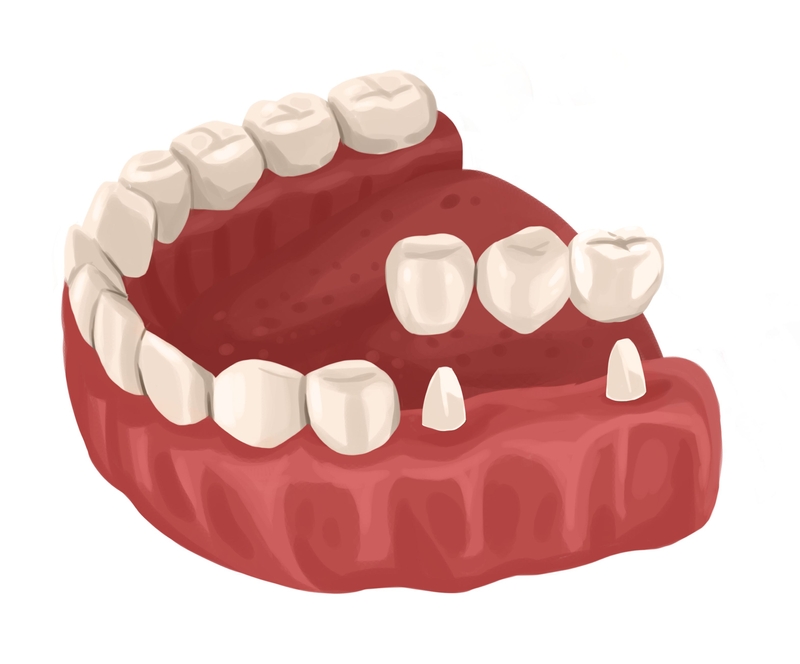
Picture by Authority Dental under CC 2.0 license
A bridge is another option for replacing one or more missing teeth. They are most often used to replace a single tooth, but can replace two adjacent teeth if needed. Like implants, bridges are also a long-term solution; however, they are unlikely to last an entire lifetime. Depending on the condition of the restoration and your oral health, you might need to replace a bridge every 10-30 years.
Anyone can get a bridge as long as the adjacent teeth on either side are healthy. If there has been a significant amount of gum disease and bone loss, and the adjacent teeth are mobile, a bridge will not be a viable option. Alternatively, you can opt for an implant-supported bridge, which does not rely on any healthy teeth. It is, however, more expensive than a traditional bridge.
Bridges are placed in two appointments. The first step will prepare the adjacent abutment teeth for the bridge, and an impression will be taken to send to the lab. A couple of weeks later, you will return to the office to place the final restoration—a 3-unit bridge costs somewhere between $1,500 and $3,000.
Long-lasting solution
Natural appearance
Quick treatment
Expensive compared to other options
Can get tooth decay and need replaced
Not an option for many missing teeth
Partial denture
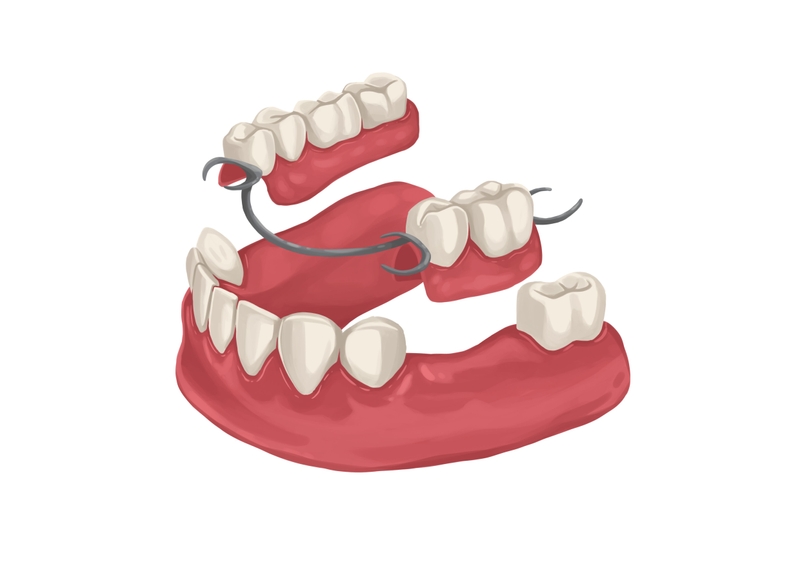
Picture by Authority Dental under CC 2.0 license
A partial denture is a more affordable option for individuals missing one or more teeth in an arch. They can last for several years, but are more of a short-term solution, especially if more teeth are lost after the initial partial is fabricated. In some situations, you can add additional teeth later as needed. With time, you may also need to replace dentures.
Most patients are good candidates for partial dentures. However, it is best to have the remaining natural teeth stable and not mobile, since the denture will place pressure on them. Patients with uncontrolled periodontal disease are not good candidates for this type of tooth replacement.
Partial dentures are completed in two appointments. At the first appointment, your dental office will take impressions of the arch. Then, at the second appointment, they will try your partial in and make adjustments. You may need additional adjustment appointments until your partial is comfortable. Partial dentures range from $1,000 to $3,000.
Inexpensive
Relatively faster treatment
May not last long
Places undue pressure on other teeth
Complete denture
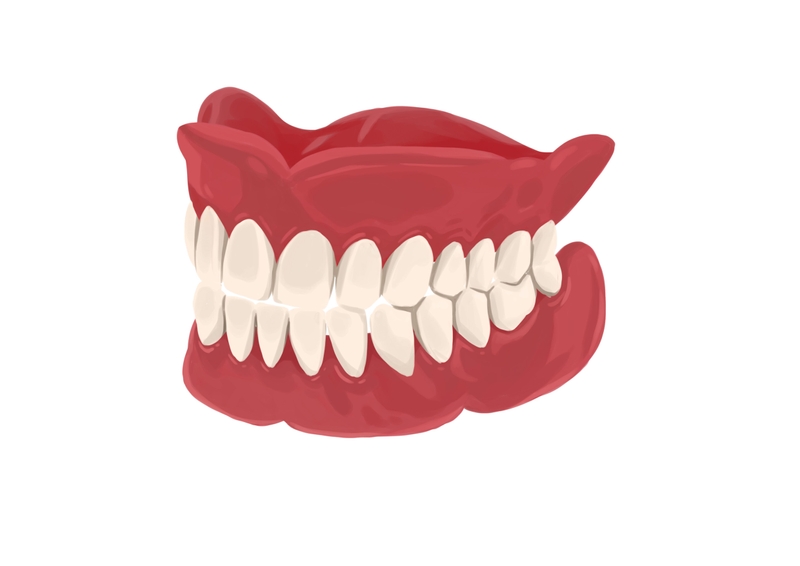
Picture by Authority Dental under CC 2.0 license
Complete dentures are used to replace an entire maxillary arch, mandibular arch, or both. Complete dentures can last many years, but usually need to be replaced as the bone remodels and changes its shape. The prosthetic teeth can also wear over time.
Traditional dentures are best for individuals who still have adequate bone support. Without the proper bone and ridge support, there is little to no support for the denture, and it will often become loose and dislodge.
Like partial dentures, complete dentures are often completed in two appointments. However, there are usually more adjustments needed, especially if teeth were removed just before the denture was fabricated. You may even have a temporary denture, called an immediate denture, for a few months before the final one is made. One denture costs between $1,000 and $3,000.
Inexpensive
Restores all teeth at once
Uncomfortable
Often requires adhesive
Implant dentures
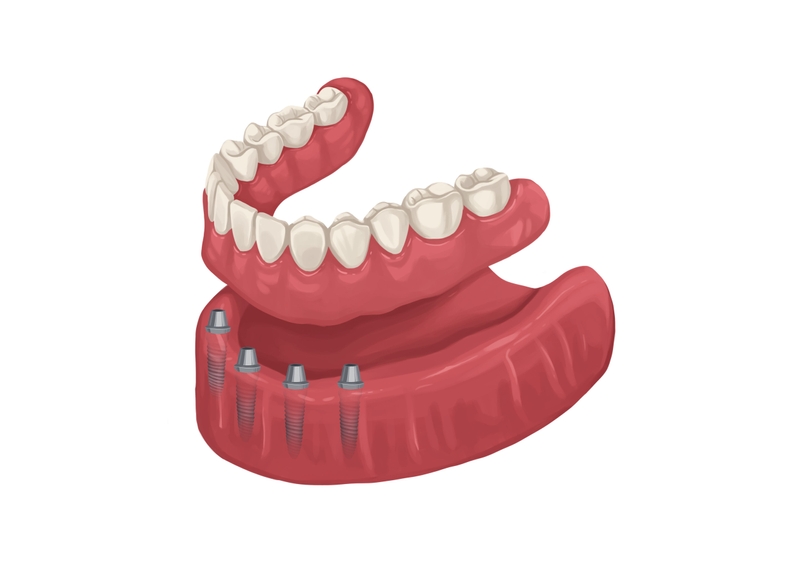
Picture by Authority Dental under CC 2.0 license
Implant-retained dentures are a superior solution than traditional dentures. The denture itself may still need to be replaced over time, but the implants typically do not need further treatment. Implant dentures are a long-term solution to missing teeth.
Anyone who is missing an entire arch of teeth is a good candidate for implant-retained dentures. However, they can also be beneficial for patients who have lost significant bone and lack sufficient support for the denture. The implants keep the denture in place, making it much easier to use.
Denture implants take time to make. Between placing the implants, the healing time, and then fabricating and adjusting the denture, you may not be finished for several months or even a year. There are several types of these dentures, but they can cost anywhere from $7,000 to $40,000 per arch.
Extra stability
Restores normal chewing function
More expensive
Longer treatment time
Flipper tooth
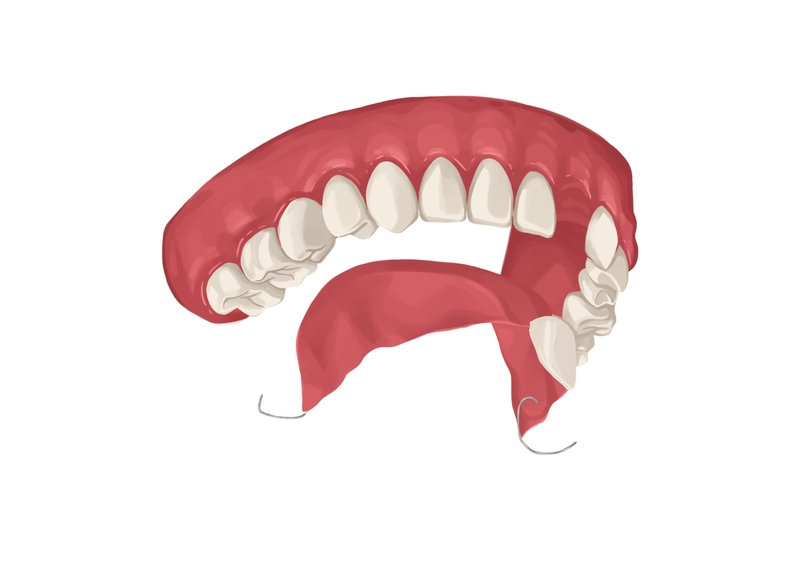
Picture by Authority Dental under CC 2.0 license
A flipper tooth is often the cheapest way to restore a missing tooth. They are typically used to replace just one tooth, but can be used for several within the same arch. Flippers are often not adjustable and break easily, which is why they are a temporary option only.
Most people can have a flipper made, but the remaining teeth should be healthy enough to support the extra pressure it will put on them. For someone who needs a tooth replaced very quickly, a flipper is a good option.
Most flippers can be made within one or two days. Your dental professional will take an impression at one appointment and then deliver the flipper at the next appointment—the average cost ranges from $500 to $2,000.
Most affordable option
Quick treatment
Temporary solution
Not usually adjustable
Why should you never ignore a missing tooth?
Many people wonder why they even need to replace a missing tooth, especially if it is a back tooth that no one else can see. While that seems logical, it can trigger a series of negative oral health consequences.
First, other teeth will eventually shift into the open area. The adjacent teeth will lean into the spot, and the tooth opposing it will begin to supra-erupt into the space. "Supra-eruption" is when a tooth continues to work itself out of the jawbone and gums when it should have otherwise stopped. A tooth can actually supra-erupt to the point where it becomes loose and eventually will result in tooth loss. In some cases, if sufficient movement has occurred, you may not be able to replace the missing tooth in the future without also undergoing additional treatment.

In addition, missing even just one tooth causes you to put more pressure and force on the remaining teeth. This causes them to wear faster, and you will notice you have more fractures and broken teeth in the future.
”However, the more serious problem is often what you cannot see: bone loss,” Lee believes.
”Without the stimulation from a tooth root, the jawbone begins to atrophy, or shrink away. In fact, significant research has shown that you can lose up to 25% of the supporting bone width in just the first year after an extraction,” he warns, emphasizing that ”waiting too long does not just make things more complicated; it can also make future tooth replacement, especially with a dental implant, more difficult and expensive. Replacing a tooth is not just about filling a space; it is about preserving the architecture of your entire mouth.”
FAQ
What is the best option for replacing missing teeth?
It would depend on various factors, such as your budget and oral health, but the ideal option to replace a missing tooth is often a dental implant. Dental implants provide the most stability and the most natural appearance, and will likely last a lifetime with proper oral hygiene and care.
What is the cheapest way to replace a missing tooth?
The cheapest way to replace a missing tooth is with a flipper. However, these are meant to be a temporary solution, and you should not expect them to last long before needing a more permanent replacement.
How to fix a missing front tooth at home?
You should never try to fix your teeth at home. There is much skill that goes into restoring teeth, and you may do more damage than what has already occurred.
Harry Lee, DMD
One of the most common conversations I have in my clinic starts with a patient asking, "It is a back tooth that no one can see... Do I really need to replace it?" My answer is an emphatic yes, and not for cosmetic reasons. Your teeth work as a team, and ignoring even one missing player can cause a cascade of dental issues.